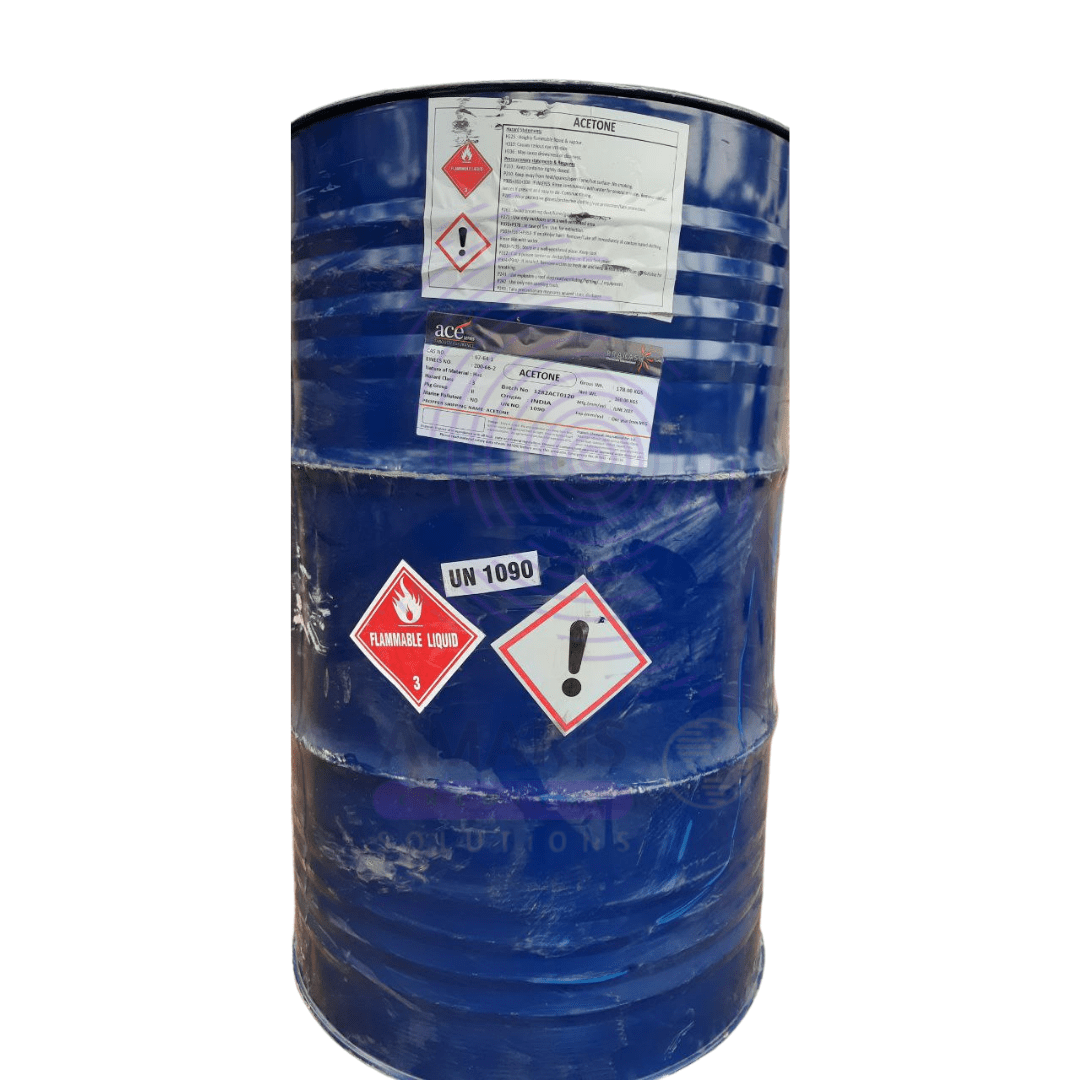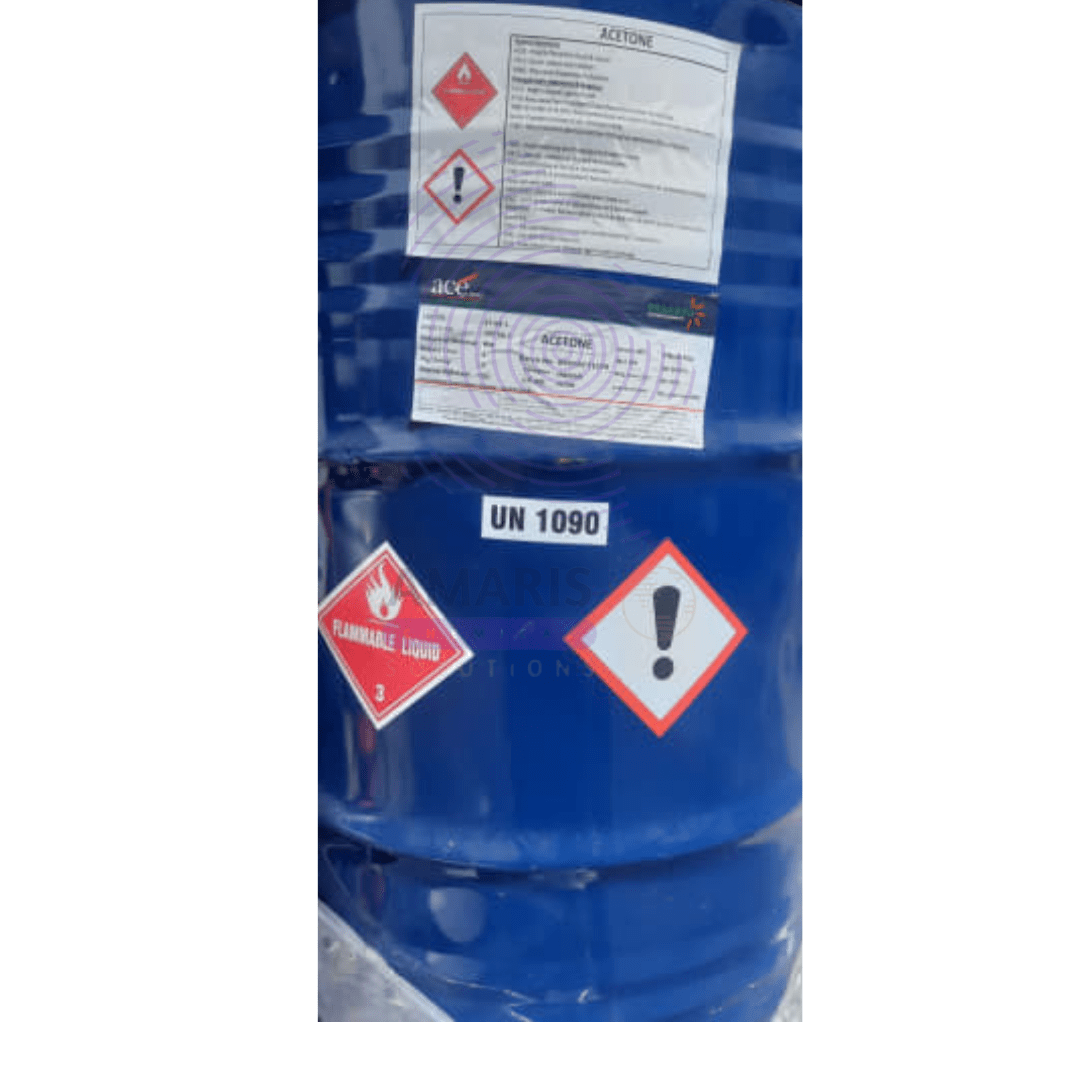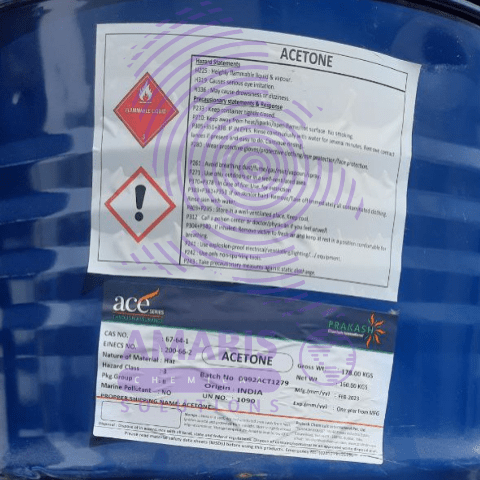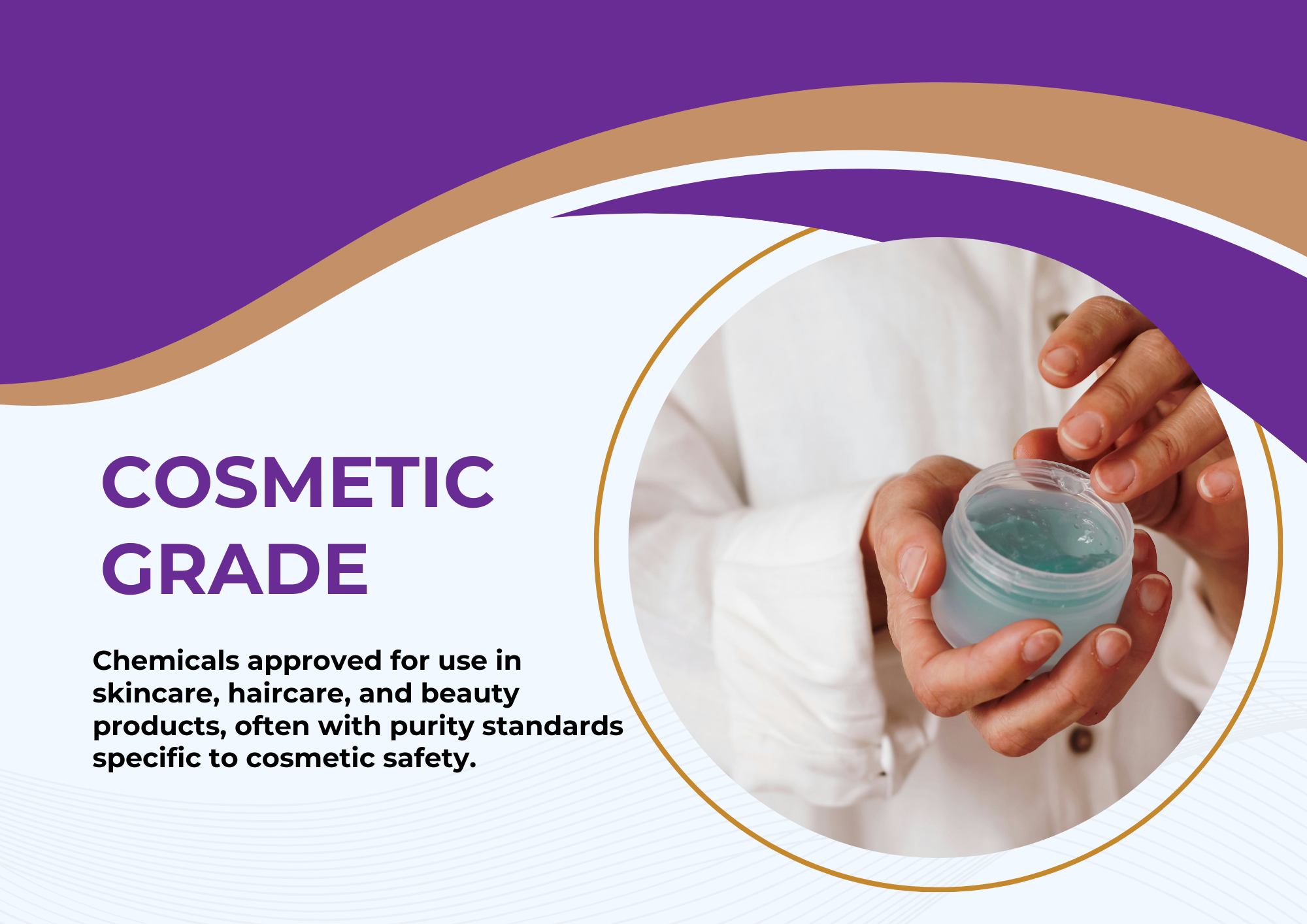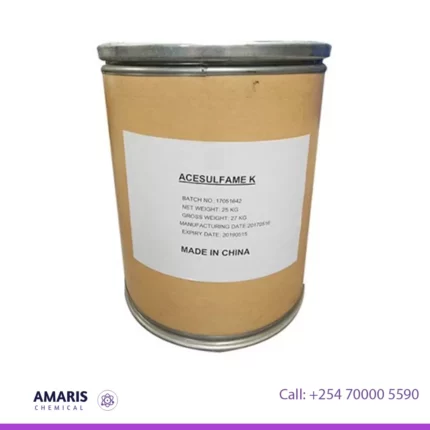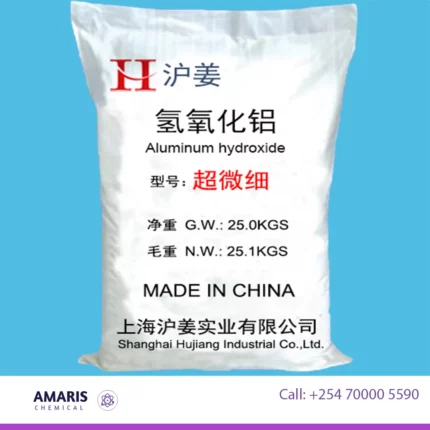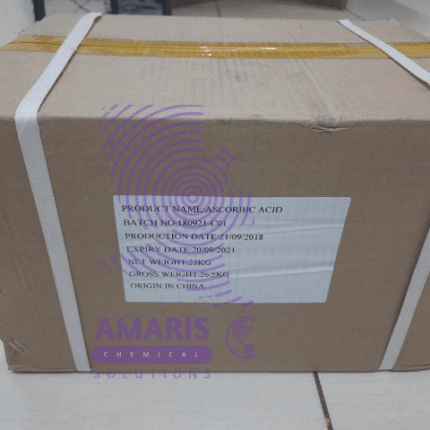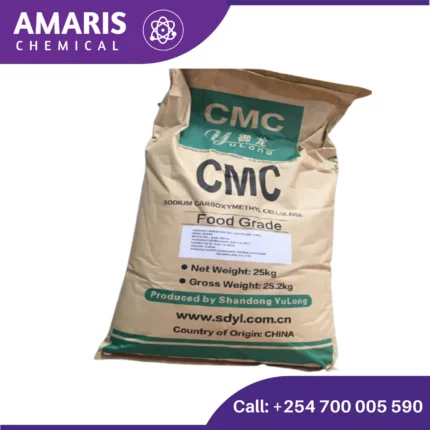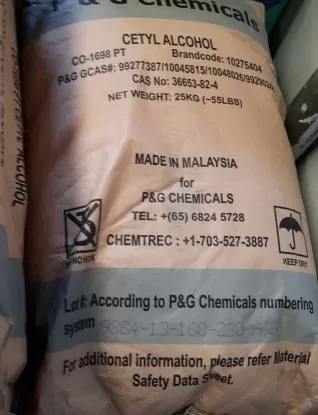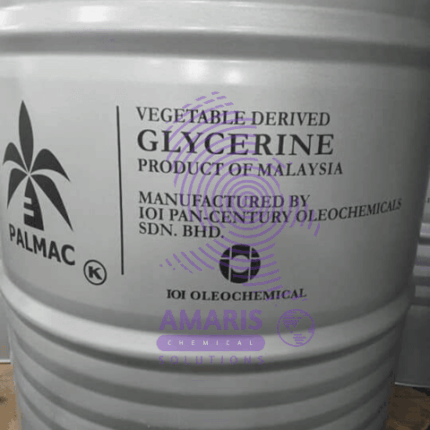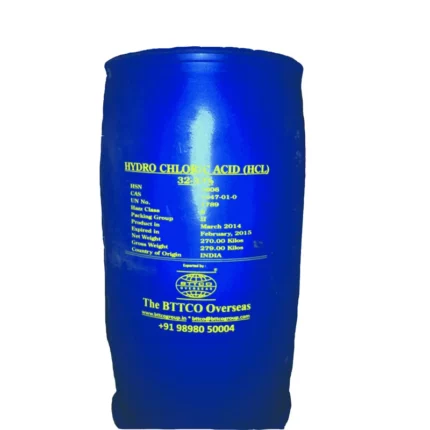“CarboxyMethyl Cellulose (CMC) Food grade” has been added to your cart. View cart
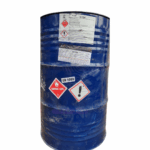


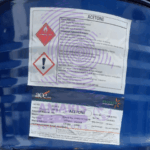
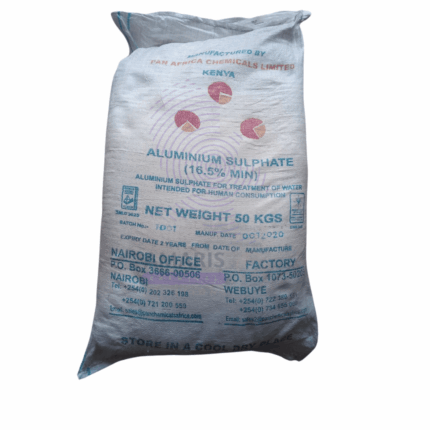
Aluminium Sulphate powder (Alum)
$6,000.00 Original price was: $6,000.00.$5,000.00Current price is: $5,000.00.
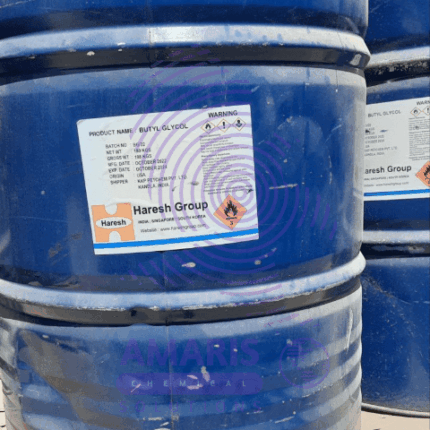
Butyl Glycol
$87,000.00 Original price was: $87,000.00.$86,000.00Current price is: $86,000.00.
Acetone
$56,000.00 Original price was: $56,000.00.$52,668.00Current price is: $52,668.00.
Whatsapp Order
Acetone
Acetone is a colorless, flammable liquid with a sweet, fruity odor. It is a common organic solvent that is widely used in the production of plastics, fibers, drugs, and other chemical compounds. Acetone is also commonly used as a cleaning agent and a nail polish remover. Chemically, it is the simplest ketone and is represented by the formula CH3COCH3.
SKU:
ACS11193CHEM0
Categories: Excipients, Analytical Reagents, Electronic Chemicals, Solvents (paint), Solvents (pharmaceutical)
Tags: acetone, nail polish remover, solvent
Description
Acetone Uses
It is a colourless, volatile, flammable organic solvent which occurs naturally in trees, vehicle exhaust, plants and as a breakdown product of animal fat for metabolism. It has a sweetish (fruity) odour. The molecular formula for the compound is CH3-CO-CH3 or CH3COCH3 or C3H6O. Other names that identify the chemical are 2-propanone, dimethyl ketone, and beta ketopropane. It dissolves in water, is toxic in high doses, is the simplest ketone. Its vapours are denser than air and it has a flash point of 0 degrees Fahrenheit. It has a boiling point of 133 degrees Fahrenheit at 760mm Hg (NTP, 1992) and a melting point of 137 degrees Fahrenheit (NTP, 1992). Its solubility is greater than or equal to 100mg/ml at 72 degrees Fahrenheit (NTP, 1992).
Some of the areas of application of Acetone include:
1. It is applied in indirect refrigeration as a brine for low-temperature heat transfer.
2. It is used in cleaning and drying precision parts.
3. It is applied as a corrosion inhibitor in hydraulic fracturing.
4. It is applied as a solvent and as a reaction intermediate for the production of other compounds that are mainly used as solvents.
5. It is applied in the manufacture of pharmaceuticals and cosmetics as a solvent.
6. It is used to store acetylene safely in gas cylinders.
7. It is used in spinning cellulose acetate fibres.
8. It is used in the manufacture of smokeless powder.
9. It is applied in boat manufacturing as a washing solvent in fibreglass.
10. It is applied in the electronic industry as a cleaning solvent.
11. It is applied as a solvent in the degumming of silk and the degreasing of wool.
12. It is applied in the formulations of surface coatings and related thinners and washes.
13. It is applied as a solvent for printing inks.
14. It is used as a varnish (nail polish) remover.
15. It is applied in the purification of paraffin.
16. It is used to harden and dehydrate tissues for extraction of various principles from plant and animal substances.
17. In cleaning, it is used to dissolve hazardous chemical spills.
18. It is used in rubber cement.
19. It is applied as a solvent in plastics and other synthetic fibres.
Additional information
| APPEARANCE |
Watery/Thin – Low viscosity e.g., ethanol |
|---|---|
| COUNTRIES OF ORIGIN |
CHINA ,TAWAIN |
| CONCENTRATION |
99.9% |
| AVAILABLE PACK SIZE |
160kg ( Metal or Plastic drum) |
KEY ATTRIBUTES
1. Basic Identification Attributes
- Chemical Name: Propan-2-one (IUPAC), Acetone (common)
- CAS Number: 67-64-1
- HS Code: 2914.11.00
- Molecular Formula: C₃H₆O
- Synonyms: Dimethyl ketone, 2-propanone, β-ketopropane, propanone
2. Physical & Chemical Properties
- Physical State: Colorless, volatile liquid
- Color & Odor: Colorless; sweet, pungent odor
- Boiling Point: 56.05°C
- Melting Point: -94.7°C
- Density: 0.791 g/cm³ at 20°C
- Solubility:
- Miscible with water, ethanol, ether, chloroform
- Soluble in most organic solvents
- pH Level: ~7 (neutral)
- Vapor Pressure: 233 mmHg at 25°C
- Flash Point: -20°C (closed cup)
- Autoignition Temperature: 465°C
- Viscosity: 0.32 cP at 25°C
- Refractive Index: 1.3588 at 20°C
3. Safety & Hazard Attributes
- Hazard Class:
- Flammable Liquid Category 2
- Eye Irritant Category 2B
- STOT Single Exposure Category 3
- NFPA Ratings: Health-1, Flammability-3, Reactivity-0
- Exposure Limits:
- OSHA PEL: 1000 ppm (2400 mg/m³) TWA
- ACGIH TLV: 500 ppm (1180 mg/m³) TWA
- NIOSH REL: 250 ppm (590 mg/m³) TWA
- Reactivity:
- Forms explosive peroxides with strong oxidizers
- Reacts violently with chlorosulfonic acid, nitric acid
- Incompatible with strong acids, bases, oxidizing agents
4. Storage & Handling Attributes
- Storage Conditions:
- Store in cool, well-ventilated area away from heat/sparks
- Keep containers tightly closed
- Temperature: <30°C recommended
- Incompatible Materials:
- Strong oxidizers, acids, bases, reducing agents
- Chloroform, bromine, amines
- Container Type:
- Steel, aluminum, or HDPE containers
- Glass for laboratory quantities
- Shelf Life: Indefinite if properly stored
- Special Handling:
- Ground all equipment to prevent static sparks
- Use explosion-proof electrical equipment
- PPE: Chemical goggles, gloves (nitrile), vapor respirator if needed
5. Regulatory & Compliance Attributes
- Regulatory Status:
- EPA: Listed under TSCA
- REACH: Registered
- OSHA: Regulated under 29 CFR 1910.1000
- DOT: UN 1090, Class 3, PG II
- Hazard Symbols:
- GHS Pictograms: Flame, Exclamation Mark
- Transportation Restrictions:
- Proper shipping name: Acetone
- Hazard class: 3 (Flammable liquid)
- Packing group: II
- Waste Disposal:
- RCRA hazardous waste (D001 for ignitability)
- Incineration is preferred method
6. Environmental & Health Impact
- Ecotoxicity:
- LC50 (fish): 4,400-13,100 mg/L (96h)
- EC50 (daphnia): 6,800 mg/L (48h)
- Persistence:
- Readily biodegradable (BOD5: 60-70% of ThOD)
- Atmospheric half-life: ~22 days
- Carcinogenicity:
- IARC: Not classified
- NTP: Not listed
- ACGIH: A4 (not classifiable as human carcinogen)
- Biodegradability:
- BOD5/COD ratio: 0.5-0.7 (readily biodegradable)
- Complete degradation in 5-30 days
SAFETY PRECAUTIONS
General Handling:
- Use in well-ventilated areas(flammable vapors can accumulate)
- Avoid open flames, sparks, and heat sources(extremely flammable liquid)
- Ground containers during transfer to prevent static electricity sparks
- Use non-sparking tools in acetone environments
Personal Protective Equipment (PPE):
- Gloves:Nitrile or neoprene (latex offers poor protection)
- Eye Protection:Chemical splash goggles
- Respiratory Protection:Organic vapor respirator if ventilation is inadequate
- Clothing:Flame-resistant lab coat/apron
Storage:
- Store in approved flammable liquid cabinets
- Keep containers tightly closed when not in use
- Store away from oxidizers, acids, and bases
- Maximum storage temperature: 25°C (77°F)
Spill Management:
- Small spills: Absorb with inert absorbents(vermiculite, sand)
- Large spills: Contain with spill berms, prevent entry into drains
- Evacuate area if vapors exceed exposure limits
Skin Contact:
- Symptoms:Dryness, irritation, possible dermatitis
- Action:
- Remove contaminated clothing
- Wash with soap and waterfor 15 minutes
- Apply moisturizer if irritation persists
Eye Contact:
- Symptoms:Redness, pain, temporary corneal damage
- Action:
- Immediately flush with lukewarm water for 20 minutes
- Hold eyelids open during flushing
- Seek medical attention if irritation continues
Inhalation:
- Symptoms:Dizziness, headache, nausea, CNS depression
- Action:
- Move to fresh air immediately
- Administer oxygen if breathing is difficult
- Seek medical help for prolonged exposure
Ingestion:
- Symptoms:Nausea, vomiting, drowsiness
- Action:
- Do NOT induce vomiting
- Rinse mouth with water
- Give 1-2 glasses of water to drink
- Seek immediate medical attention
Fire Hazards:
- Extremely flammable liquid and vapor
- Flash point: -20°C (-4°F)
- Vapor/air mixtures are explosive (2.5-12.8% by volume)
- Vapors are heavier than air - may travel to ignition sources
Extinguishing Methods:
- Recommended:
- Alcohol-resistant foam
- CO₂ extinguishers
- Dry chemical powder (Class B)
- Not Recommended:
- Water jets (ineffective, may spread fire)
- Water spray (only for cooling exposed containers)
Firefighting Procedures:
- Wear self-contained breathing apparatus (SCBA)and full protective gear
- Stop leak if safe to do so
- Cool nearby containers with water sprayto prevent explosion
- Allow controlled burning if leak cannot be stopped
- Evacuate area if fire becomes uncontrollable
Emergency & Regulatory Information
- NFPA Rating:Health 1, Flammability 3, Instability 0
- GHS Hazard Statements:
- H225: Highly flammable liquid and vapor
- H319: Causes serious eye irritation
- H336: May cause drowsiness or dizziness
- OSHA PEL:1000 ppm (TWA)
- Emergency Contacts:Poison Control, local fire department
You may also like…
Acetone Extra Pure
Acetone Extra Pure
Acetone is a colorless, flammable liquid with a sweet, fruity odor. It is a common organic solvent that is widely used in the production of plastics, fibers, drugs, and other chemical compounds. Acetone is also commonly used as a cleaning agent and a nail polish remover. Chemically, it is the simplest ketone and is represented by the formula CH3COCH3.
Related products
Acesulfame K
$0.00
Acesulfame K
Acesulfame K, also known as Acesulfame Potassium or Ace-K, is a high-intensity artificial sweetener that is commonly used as a sugar substitute in various food and beverage products. It is a white, odorless powder that is about 200 times sweeter than sucrose (table sugar), but it has no caloric value and does not affect blood sugar levels. Acesulfame K is chemically stable and can withstand high temperatures, making it suitable for use in baked goods and other heat-processed products. It is often found in sugar-free or low-calorie products, such as diet sodas, sugar-free chewing gums, desserts, and tabletop sweeteners.
Aluminium hydroxide
Aluminium hydroxide is a chemical compound with the formula Al(OH)3. It is an inorganic compound that is commonly used as an antacid to neutralize excess stomach acid, as well as a component in the manufacture of various products, such as ceramics, paper, and cosmetics. It is a white, powdery substance that is insoluble in water and has a low toxicity. When heated, it decomposes to produce aluminium oxide, or alumina, which is used in the production of aluminium metal.
Ascorbic acid
Ascorbic acid, also known as vitamin C, is a water-soluble vitamin that plays an important role in various physiological processes in the human body. It is an essential nutrient that cannot be produced by the body and must be obtained through dietary sources or supplements. Ascorbic acid acts as a powerful antioxidant, protecting cells and tissues from oxidative damage caused by free radicals. It also plays a critical role in the production of collagen, which is important for the health of skin, bones, and other connective tissues. Additionally, ascorbic acid is involved in the synthesis of neurotransmitters and the metabolism of proteins and fats. Deficiency in ascorbic acid can lead to a range of health problems, including scurvy, a condition characterized by fatigue, weakness, and bleeding gums.
CarboxyMethyl Cellulose (CMC) Food grade
CarboxyMethyl Cellulose (CMC) Food grade is a water-soluble polymer that is derived from cellulose, which is a naturally occurring polymer found in plant cell walls. CMC is produced by chemically modifying cellulose through the addition of carboxymethyl groups, which gives it its unique properties such as high water solubility, thickening ability, and film-forming properties.
CMC is widely used in a variety of industries, including food, pharmaceuticals, cosmetics, and textiles, as a thickener, binder, stabilizer, emulsifier, and dispersant. It is commonly found in food products such as ice cream, salad dressings, and baked goods as a thickener and emulsifier, as well as in cosmetics and personal care products such as toothpaste and shampoo as a binder and stabilizer.
Cetyl alcohol
Cetyl alcohol is a fatty alcohol with the chemical formula CH3(CH2)15OH. It is a waxy substance that is used in a variety of industries, including cosmetics, personal care products, and pharmaceuticals. Cetyl alcohol is commonly derived from vegetable oils such as coconut or palm oil, and is often used as an emulsifier, thickener, or lubricant in formulations such as lotions, creams, and ointments. It is also sometimes used as a surfactant, meaning it helps to dissolve other substances and improve their absorption.
Corn Starch (food grade)
Corn Starch (food grade) is a fine, powdery substance derived from the endosperm of corn kernels. It is commonly used as a thickening agent in cooking and baking, as well as in other industries such as papermaking, textiles, and adhesives. Corn starch has a neutral flavor and a translucent appearance when mixed with liquid, making it a versatile ingredient in many recipes.
Glycerin Food Grade
Glycerin Food Grade, also known as glycerol, is a colorless, odorless, viscous liquid that is sweet-tasting and non-toxic. It is a type of alcohol with three hydroxyl (OH) groups, and is commonly used in various industries such as pharmaceuticals, cosmetics, food, and personal care products. Glycerin has numerous applications, including as a solvent, humectant, emollient, and lubricant, among others. It can be derived from both plant and animal sources, and is also produced as a byproduct of soap and biodiesel manufacturing.
Hydrochloric Acid HCL
Hydrochloric acid HCl is a strong, colorless, and highly corrosive acid that is widely used in industry and laboratory applications. It is a solution of hydrogen chloride gas in water and is commonly known as muriatic acid. Hydrochloric acid is a highly reactive compound that can dissolve many metals and organic materials, and it is also an important component of the gastric acid in the stomach, where it helps in the digestion of food. Hydrochloric acid has a pungent odor and can cause severe burns and eye damage if handled improperly. It is commonly used in the production of PVC plastics, fertilizers, and various other chemicals, and it is also used in the petroleum industry for the removal of impurities from oil and gas wells.


 Emollients
Emollients Humectants
Humectants UV Filters
UV Filters Surfactants (cosmetic)
Surfactants (cosmetic) Preservatives (cosmetic)
Preservatives (cosmetic) Fragrances and Essential Oils
Fragrances and Essential Oils Antioxidants (cosmetics)
Antioxidants (cosmetics)
 Solvents (lab)
Solvents (lab) Chromatography Chemicals
Chromatography Chemicals Microbiology and Cell Culture Reagents
Microbiology and Cell Culture Reagents Biochemical Reagents
Biochemical Reagents Inorganic and Organic Standards
Inorganic and Organic Standards LABORATORY EQUIPMENT & APPARATUS
LABORATORY EQUIPMENT & APPARATUS Spectroscopy Reagents
Spectroscopy Reagents Molecular Biology Reagents
Molecular Biology Reagents
 Precious Metal Extraction Agents
Precious Metal Extraction Agents
 Plasticizers
Plasticizers Polymerization Initiators
Polymerization Initiators Stabilizers
Stabilizers Monomers
Monomers Fillers and Reinforcements
Fillers and Reinforcements Antioxidants (plastics)
Antioxidants (plastics) Colorants (plastic pigments,Dyes)
Colorants (plastic pigments,Dyes)
 Fertilizers
Fertilizers Plant Growth Regulators
Plant Growth Regulators Soil Conditioners
Soil Conditioners Animal Feed Additives
Animal Feed Additives Biostimulants
Biostimulants
 Dough Conditioners
Dough Conditioners Flour Treatments
Flour Treatments Fat Replacers
Fat Replacers Preservatives (baking)
Preservatives (baking)
 Surfactants (cleaning)
Surfactants (cleaning) Builders
Builders Bleaching Agents
Bleaching Agents Enzymes
Enzymes Solvents (cleaning)
Solvents (cleaning) Fragrances
Fragrances Disinfectant
Disinfectant Metal cleaning
Metal cleaning
 Binders/Resins
Binders/Resins Pigments
Pigments Solvents (paint)
Solvents (paint) Additives
Additives Driers
Driers Anti-Corrosion Agents
Anti-Corrosion Agents Specialty Coatings
Specialty Coatings Functional Coatings
Functional Coatings Application-Specific Coatings
Application-Specific Coatings
 Sealants and Adhesives
Sealants and Adhesives
 Biodegradable Surfactants
Biodegradable Surfactants Bio-based Solvents
Bio-based Solvents Renewable Polymers
Renewable Polymers Carbon Capture Chemicals
Carbon Capture Chemicals Wastewater Treatment Chemicals
Wastewater Treatment Chemicals
 Preservatives (food)
Preservatives (food) Flavor Enhancers
Flavor Enhancers Acidulants
Acidulants Sweeteners
Sweeteners Emulsifiers
Emulsifiers Antioxidants (food)
Antioxidants (food) Colorants (food)
Colorants (food) Nutrient Supplements
Nutrient Supplements Nutraceutical Ingredients
Nutraceutical Ingredients
 Fresh Herbs
Fresh Herbs Whole Spices
Whole Spices Ground Spices
Ground Spices Spice Blends
Spice Blends
 Surfactants(oil)
Surfactants(oil)
 Antibiotics
Antibiotics Active Pharmaceutical Ingredients
Active Pharmaceutical Ingredients Excipients
Excipients Vaccine Adjuvants
Vaccine Adjuvants Nutraceutical Ingredients
Nutraceutical Ingredients Solvents (pharmaceutical)
Solvents (pharmaceutical)
 Automotive chemicals
Automotive chemicals Pyrotechnic Chemicals
Pyrotechnic Chemicals


 Vulcanizing Agents
Vulcanizing Agents Accelerators & Retarders
Accelerators & Retarders Antidegradants
Antidegradants Reinforcing Agents
Reinforcing Agents Plasticizers & Softeners
Plasticizers & Softeners Fillers & Extenders
Fillers & Extenders Blowing Agents
Blowing Agents Adhesion Promoters
Adhesion Promoters